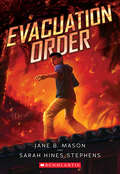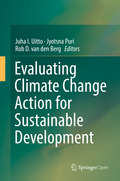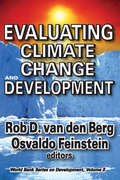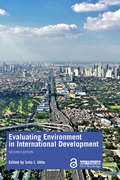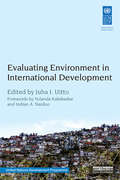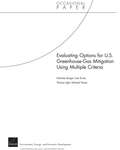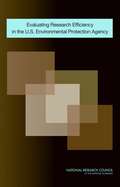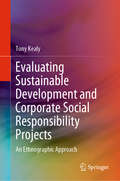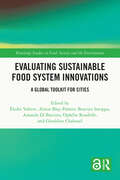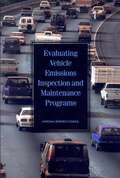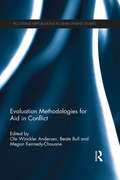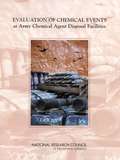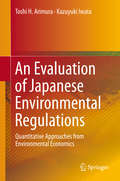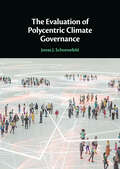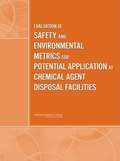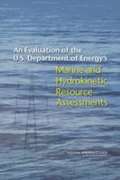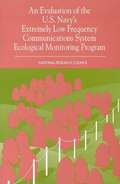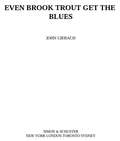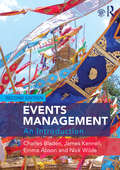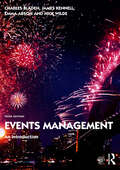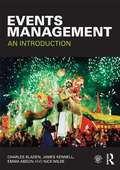- Table View
- List View
Evacuation Order
by Jane B. Mason Sarah Hines StephensIf you only had a few minutes to evacuate your house in the face of a wildfire, what would you take? And if you were separated from your mom and thought she was in danger, would you still leave - or would you head back in to rescue her?Twelve-year-old Sam lives alone with his mom and their dog in the idyllic seaside town of Santa Bonita. His father died when Sam was young, but his best friend Marco has been helping recreate his dad's old photos as part of a memorial project. One particularly warm October day, however, Sam smells something faint from far away. It's the scent of smoke.An unexpected southern California wildfire is whipping ferociously toward town. Sam, Marco, and the whole neighborhood must urgently evacuate with little warning. Sam is distraught. If his house burns, all his memories of his father will go with it.Even worse, Sam’s dog disappears during the emergency, sending the boy into a panic. When he should be leaving the city with Marco and his family, Sam instead turns back, a decision that will plunge him right into the path of a deadly fire.
Evaluating Climate Change Action for Sustainable Development
by Rob D. van den Berg Jyotsna Puri Juha I. UittoThis book is open access under a Creative Commons license. This authoritative book presents the ever progressing state of the art in evaluating climate change strategies and action. It builds upon a selection of relevant and practical papers and presentations given at the 2nd International Conference on Evaluating Climate Change and Development held in Washington DC in 2014 and includes perspectives from independent evaluations of the major international organisations supporting climate action in developing countries, such as the Global Environment Facility. The first section of the book sets the stage and provides an overview of independent evaluations, carried out by multilateral development banks and development organisations. Important topics include how policies and organisations aim to achieve impact and how this is measured, whether climate change is mainstreamed into other development programs, and whether operations are meeting the urgency of climate change challenges. The following sections focus on evaluation of climate change projects and policies as they link to development, from the perspective of international organisations, NGO's, multilateral and bilateral aid agencies, and academia. The authors share methodologies or approaches used to better understand problems and assess interventions, strategies and policies. They also share challenges encountered, what was done to solve these and lessons learned from evaluations. Collectively, the authors illustrate the importance of evaluation in providing evidence to guide policy change to informed decision-making.
Evaluating Climate Change and Development: Volume 9, World Bank Series on Development (World Bank Series On Evaluation And Development Ser. #Vol. 8)
by Osvaldo N. FeinsteinClimate change has become one of the most important global issues of our time, with far-reaching natural, socio-economic, and political effects. To address climate change and development issues from the perspective of evaluation, an international conference was held in Alexandria, Egypt. This book distills the essence of that timely conference, building on the experiences of more than 400 reports and studies presented.Developing countries may be particularly vulnerable to the expected onslaught of higher temperatures, rising sea levels, changing waterfall patterns, and increasing natural disasters. All societies will have to reduce their vulnerability to these changes, and this book describes how vulnerabilities may be addressed in a systematic manner so that governments and local communities may better understand what is happening. Different approaches are also discussed, including the use of human security as a criterion for evaluation as well as ways to deal with risk and uncertainty. Evaluating Climate Change and Development presents a rich variety of methods to assess adaptation through monitoring and evaluation.The volume deals with climate change, development, and evaluation; challenges and lessons learned from evaluations; mitigation of climate change; adaptation to climate change; vulnerability, risks and climate change; and presents a concluding chapter on the road ahead. Collectively the authors offer a set of approaches and techniques for the monitoring and evaluation of climate change.
Evaluating Environment in International Development
by Juha I. UittoThis book provides novel and in-depth perspectives on evaluating environment and sustainability issues in developing countries. Evaluating Environment in International Development focuses on the approaches and experiences of leading international organizations, not-for-profits, and multilateral and bilateral aid agencies to illustrate how systematic evaluation is an essential tool for providing evidence for decision-makers. Moving beyond projects and programmes, it explores normative work on the environment as well as environmental consequences of economic and social development efforts. This new edition reflects on the 2030 Agenda for Sustainable Development and Sustainable Development Goals and considers how they have influenced efforts in a wide range of countries and what the implications are for evaluation. It also explores ways in which Big Data and geospatial approaches might be utilized. Significantly updated throughout to reflect recent developments in climate change research, and on the implications of the 2020 pandemic, this volume will be of great interest to students and scholars of environment studies, development studies, international relations, sustainable development and evaluation, as well as practitioners in international organizations and development and environmental NGOs.
Evaluating Environment in International Development
by Juha I. Uitto Yolanda Kakabadse Indran A. NaidooMore than twenty years after the Earth Summit was held in Rio de Janeiro in 1992, both national and international actors in governmental and nongovernmental fields are still searching for insights into how sustainable development can be advanced and environmental concerns incorporated into the development agenda more effectively. Moreover, climate change has emerged as a preeminent challenge to both the environment and to development. Evaluating Environment in International Development provides international perspectives and in-depth knowledge of evaluating development and the environment and applies evaluation knowledge to climate change mitigation and adaptation. The book focuses on the approaches and experiences of leading international organizations, not-for-profits, and multilateral and bilateral aid agencies to illustrate how systematic evaluation is an essential tool for providing evidence for decision-makers. It provides novel and in-depth perspectives on evaluating environment and sustainability issues in developing countries. Moving beyond projects and programmes, it considers aspects such as evaluating normative work on the environment and evaluating environmental consequences of economic and social development efforts. This original collection should be of interest to scholars of environment studies, development studies, international relations, sustainable development and evaluation, as well as practitioners in international organizations and development and environmental NGOs.
Evaluating Options for U.S. Greenhouse-Gas Mitigation Using Multiple Criteria
by Liisa Ecola Michael Toman Thomas Light Nicholas BurgerChoosing policy responses to mitigate greenhouse gases (GHGs) is one of the great challenges that the United States faces. It will require balancing cost-effectiveness and other objectives that reflect the institutional and political realities of passing major federal legislation with widespread impacts on U.S. producers and consumers. This paper develops a framework for evaluating U.S. GHG-mitigation policy that balances several criteria.
Evaluating Research Efficiency in the U.S. Environmental Protection Agency
by National Research Council of the National AcademiesA new book from the National Research Council recommends changes in how the federal government evaluates the efficiency of research at EPA and other agencies. Assessing efficiency should be considered only one part of gauging a program's quality, relevance, and effectiveness. The efficiency of research processes and that of investments should be evaluated using different approaches. Investment efficiency should examine whether an agency's R&D portfolio, including the budget, is relevant, of high quality, matches the agency's strategic plan. These evaluations require panels of experts. In contrast, process efficiency should focus on "inputs" (the people, funds, and facilities dedicated to research) and "outputs" (the services, grants, publications, monitoring, and new techniques produced by research), as well as their timelines and should be evaluated using quantitative measures. The committee recommends that the efficiency of EPA's research programs be evaluated according to the same standards used at other agencies. To ensure this, OMB should train and oversee its budget examiners so that the PART questionnaire is implemented consistently and equitably across agencies.
Evaluating Sustainable Development and Corporate Social Responsibility Projects: An Ethnographic Approach
by Tony KealyThis book discusses sustainable development decision-making. Focusing on decisions to invest in wind turbine technology as part of a corporation’s CO2 emission reduction strategy, it presents a new evaluation framework, based on the triple bottom line framework widely used by businesses to communicate their adherence to corporate social responsibility. This new framework allows the evaluation of strategic corporate decisions to invest in wind turbines to mitigate global warming in the context of a corporation’s social responsibility, and includes an objective measurement stage to add rigor to the evaluation process. The book describes the use of measured data from wind turbine projects to both develop and validate the methodology, and also identifies key enablers and barriers as businesses attempt to successfully integrate corporate social responsibility into their overall business strategy. Given its scope, the book appeals to postgraduate students, researchers, and business professionals interested in the environmental impact of corporations. Featuring case studies from Ireland, it is particularly relevant to audiences within Europe.
Evaluating Sustainable Food System Innovations: A Global Toolkit for Cities (Routledge Studies in Food, Society and the Environment)
by Élodie Valette Alison Blay-Palmer Beatrice Intoppa Amanda Di Battista Ophélie Roudelle Géraldine ChaboudThis book presents URBAL, an approach that applies impact pathway mapping to understand how food system innovations in cities, and their territories, change and impact food system sustainability. Around the world, people are finding innovative ways to make their food systems more sustainable. However, documenting and understanding how these innovations impact the sustainability of food system can be a challenge. The Urban Driven Innovations for Sustainable Food Systems (URBAL) methodology responds to these constraints by providing innovations with a simple, open-source, resource-efficient tool that is easily appropriated and adaptable to different contexts. URBAL is designed to respond to the demands of field stakeholders, whether public or private, to accompany and guide them in their actions and decision-making with regard to sustainability objectives. This book presents this qualitative and participatory impact assessment method of food innovations and applies it to several cases of food innovation around the world, including the impact of agricultural districts in Milan, chefs and gastronomy in Brasilia, e-commerce in Vietnam, eco-friendly farm systems in Berlin and The Nourish to Flourish governance process in Cape Town. The book demonstrates how food innovations can impact different dimensions of sustainability, positively and negatively, and identify the elements that facilitate or hinder these impacts. The volume reflects on how to strengthen the capacity of these stakeholders to disseminate their innovations on other scales to contribute to the transition towards more sustainable food systems. This book will be of great interest to students and scholars working on sustainable food systems, urban food, food innovation and impact assessment, as well as policymakers, practitioners and funders interested in these areas.
Evaluating Vehicle Emissions Inspection and Maintenance Programs
by Committee on Vehicle Emission Inspection Maintenance ProgramsEmissions inspection and maintenance (I/M) programs subject vehicles to periodic inspections of their emission control systems. Despite widespread use of these programs in air-quality management, policy makers and the public have found a number of problems associated with them. Prominent among these issues is the perception that emissions benefits and other impacts of I/M programs have not been evaluated adequately. Evaluating Vehicle Emissions Inspection and Maintenance Programsassesses the effectiveness of these programs for reducing mobile source emissions. In this report, the committee evaluates the differences in the characteristics of motor vehicle emissions in areas with and without I/M programs, identifies criteria and methodologies for their evaluation, and recommends improvements to the programs. Most useful of all, this book will help summarize the observed benefits of these programs and how they can be redirected in the future to increase their effectiveness.
Evaluation Methodologies for Aid in Conflict (Routledge Explorations in Development Studies)
by Ole Winckler Andersen Beate Bull Megan Kennedy-ChouaneKnowledge and rigorous evidence around the role of external development partners in situations of conflict and fragility is still lacking. There is little accountability for the billions in aid being spent in places like Afghanistan, Iraq and the Democratic Republic of Congo. This book analyses evaluation theory and practice in order to help fill this knowledge gap and advocates a realistic and rigorous approach to evaluating international engagement. Through a series of case studies, this book highlights both the promise, and potential pitfalls, of taking a more evaluative approach to understanding aid in conflict regions. These illustrate the methodological and analytical approach taken by researchers working to understand the results and effectiveness of conflict prevention and peacebuilding support. While well-grounded in current theoretical and methodological debates, the book provides valuable practical information by examining how and why different choices were made in the context of each evaluation. The book shows what future steps may be envisaged to further strengthen evaluations of support for conflict prevention and peacebuilding. The analysis draws on a wealth of perspectives and voices to provide researchers and students in development studies and conflict and peace studies as well as development evaluators with a deep and broad understanding of evaluation methods and approaches.
EVALUATION OF CHEMICAL EVENTS at Army Chemical Agent Disposal Facilities
by Committee on Evaluation of Chemical Events at Army Chemical Agent Disposal FacilitiesFor over a decade the Army has been carrying out a program aimed at the destruction of accumulated chemical weapons stored at several sites. While destruction by incineration has been successful, several incidents -- called chemical events -- occurred during the disposal process or decontamination activities that raised some public concerns about the safety of operations of three third generation incineration facilities. As a result, the Congress asked the NRC to investigate whether the incidents provide information useful to help ensure safe operation of the future sites. This book presents an analysis of causes of and responses to past chemical events, implications of such events for ongoing and future demilitarization activities, and recommendations for preparing for future events.
An Evaluation of Japanese Environmental Regulations: Quantitative Approaches from Environmental Economics
by Toshi H. Arimura Kazuyuki IwataFocusing on air pollution, energy efficiency and climate change, this book provides an introduction to Japan's environmental policies and regulations, and offers economic analyses and RIAs (Regulatory Impact Analysis) of environmental regulations implemented or planned by the national and local governments. The opening chapter reviews environmental economics and outlines the current status of RIAs in Japan. Chapter 2 analyzes the NOx-PM Act, which prohibits the use of old and polluting vehicles in metropolitan areas. Chapter 3 examines a Tokyo metropolitan government regulation which requires installation of pollution control equipment in older trucks that fail to meet emission standards. Chapter 4 traces the impact of the NOx-PM Act on the used car market and used vehicle exports. Chapter 5 presents an economic analysis of a highway toll reduction, revealing an unexpected negative social impact: it increased traffic congestion and associated environmental problems. The final three chapters address policies and regulations related to energy efficiency and climate change Chapter 6 evaluates the effectiveness of Japan's Energy Conservation Act, originally introduced in 1979 and amended numerous times to address climate change. Chapter 7 anticipates the impact of a proposed economy-wide carbon tax, using input-output analysis to assess short-term economic impacts in each sector. Also presented here is an examination of the effectiveness of a reduced carbon tax for energy-intensive industries, with a discussion of the impact of the proposal on households. The final chapter discusses the role and limitations of economic models for evaluating Japan's mid-term GHG (Greenhouse Gas) emission target during the post-Kyoto period. This is the first book to evaluate Japanese environmental policies from an economic perspective, using a variety of current quantitative approaches. Its findings and suggestions will benefit students, policy makers and government officials in developing and developed countries where the public faces similar environmental problems.
The Evaluation of Polycentric Climate Governance
by Jonas J. SchoenefeldPolycentric climate governance holds enormous promise, but to unleash its full force, policy evaluation needs a stronger role in it. This book develops Nobel Laureate Elinor Ostrom's important work by offering fresh perspectives from cutting-edge thinking on climate governance and policy evaluation. Driven by theoretical innovation and empirical exploration, this book not only argues for a stronger connection between polycentric climate governance and practices of evaluation, but also demonstrates the key value of doing so with a real-world, empirical test in the polycentric setting of the European Union. This book offers a crucial step to take climate governance to the next level. It will be of interest to advanced students and researchers in climate governance, as well as practitioners who seek to enhance climate action, which is needed to avoid a climate catastrophe and to identify a pathway towards the 1.5° Celsius target in the Paris Agreement.
Evaluation of Safety and Environmental Metrics for Potential Application at Chemical Agent Disposal Facilities
by National Research Council of the National AcademiesBy the end of 2009, more than 60 percent of the global chemical weapons stockpile declared by signatories to the Chemical Weapons Convention will have been destroyed, and of the 184 signatories, only three countries will possess chemical weapons-the United States, Russia, and Libya. In the United States, destruction of the chemical weapons stockpile began in 1990, when Congress mandated that the Army and its contractors destroy the stockpile while ensuring maximum safety for workers, the public, and the environment. The destruction program has proceeded without serious exposure of any worker or member of the public to chemical agents, and risk to the public from a storage incident involving the aging stockpile has been reduced by more than 90 percent from what it was at the time destruction began on Johnston Island and in the continental United States. At this time, safety at chemical agent disposal facilities is far better than the national average for all industries. Even so, the Army and its contractors are desirous of further improvement. To this end, the Chemical Materials Agency (CMA) asked the NRC to assist by reviewing CMA's existing safety and environmental metrics and making recommendations on which additional metrics might be developed to further improve its safety and environmental programs.
Evaluation of the U.S. Department of Energy's: Alternatives for the Removal and Disposition of Molten Salt Reactor Experiment Fluoride Salts
by Molten Salt Panel of the Committee on Remediation of Buried Tank WastesThis book discusses the technical alternatives for cleanup of radioactive fluoride salts that were the fuel for the Molten Salt Reactor Experiment, a novel nuclear reactor design that was tested in the 1960s at the Oak Ridge National Laboratory in Tennessee. These fluoride salts pose an unusual cleanup challenge. The book discusses alternatives for processing and removing the salts based on present knowledge of fluoride salt chemistry and nuclear reactions of the radioactive constituents.
An Evaluation of the U.S. Department of Energy’s Marine and Hydrokinetic Resource Assessments
by Marine Hydrokinetic Energy Technology Assessment CommitteeIncreasing renewable energy development, both within the United States and abroad, has rekindled interest in the potential for marine and hydrokinetic (MHK) resources to contribute to electricity generation. These resources derive from ocean tides, waves, and currents; temperature gradients in the ocean; and free-flowing rivers and streams. One measure of the interest in the possible use of these resources for electricity generation is the increasing number of permits that have been filed with the Federal Energy Regulatory Commission (FERC). As of December 2012, FERC had issued 4 licenses and 84 preliminary permits, up from virtually zero a decade ago. However, most of these permits are for developments along the Mississippi River, and the actual benefit realized from all MHK resources is extremely small. The first U. S. commercial gridconnected project, a tidal project in Maine with a capacity of less than 1 megawatt (MW), is currently delivering a fraction of that power to the grid and is due to be fully installed in 2013. As part of its assessment of MHK resources, DOE asked the National Research Council (NRC) to provide detailed evaluations. In response, the NRC formed the Committee on Marine Hydrokinetic Energy Technology Assessment. As directed in its statement of task (SOT), the committee first developed an interim report, released in June 2011, which focused on the wave and tidal resource assessments (Appendix B). The current report contains the committee's evaluation of all five of the DOE resource categories as well as the committee's comments on the overall MHK resource assessment process. This summary focuses on the committee's overarching findings and conclusions regarding a conceptual framework for developing the resource assessments, the aggregation of results into a single number, and the consistency across and coordination between the individual resource assessments. Critiques of the individual resource assessment, further discussion of the practical MHK resource base, and overarching conclusions and recommendations are explained in An Evaluation of the U. S. Department of Energy's Marine and Hydrokinetic Resource Assessment.
An Evaluation of the U.S. Navy's Extremely Low Frequency Communications System Ecological Monitoring Program
by Committee to Evaluate the U.S. Navy's Extremely Low Frequency Communications System Ecological Monitoring ProgramThe U.S. Navy established an ecological monitoring program to determine whether electric and magnetic fields from extremely low frequency (ELF) communications systems influenced plant and animal populations near the transmitting facilities. Although some of the researchers believe that a few biological changes might have occurred, they concluded that the results do not indicate significant adverse ecological effects.This book evaluates the 11 ecological studies of the Navy's monitoring program and examines the adequacy of experimental design, the data collection and analysis, and the soundness of the conclusions. It also addresses whether the monitoring program was capable of detecting subtle effects due to ELF exposure and examines the biological changes observed by some program researchers, such as enhanced tree growth.
Even Brook Trout Get The Blues
by John GierachFrom his reminiscences about learning to fish to a lyrical piece about fishing during a late spring snow to a wry, though compassionate, look at the hard life of a brook trout, Gierach provides entertainment for fly-fishers and literature lovers alike.
Even So
by Charles Boardman HawesCharles Boardman Hawes is the Newberry Medal award-winning author of 'The Dark Frigate'. "Donald Hastings followed the sea. Holiest, impetuous, young, as were so many of those sea captains in that golden era of the early nineteenth century, he left but one shadow on his memory—perhaps not altogether a shadow. Therein lies the story.
Events Management: An Introduction
by Charles Bladen James Kennell Emma Abson Nick WildeContemporary events management is a diverse and challenging field. This introductory textbook fully explores the multidisciplinary nature of events management and provides the student with all the practical skills and professional knowledge they need in order to succeed in the events industry. It introduces every core functional area of events management, such as marketing, finance, project management, strategy, operations, event design and human resources, in a vast array of different event settings from sport to political events. This new edition has been updated to include: • New and updated content on developments in technology, risk management and event volunteering. • New and updated case studies that include emerging economies. • New industry voices by international practitioners. Every topic is brought to life through vivid case studies, personal biographies and examples of best practice from the real world of events management. Written by a team of authors with many years’ experience of working in the events industry, Events Management: An Introduction is the essential course text for any events management programme.
Events Management: An Introduction
by Charles Bladen James Kennell Emma Abson Nick WildeContemporary events management is a diverse and challenging field. This introductory textbook fully explores the multidisciplinary nature of events management and provides the student with all the practical skills and professional knowledge they need to succeed in the events industry. It introduces every core functional area of events management, such as marketing, finance, project management, strategy, operations, event design and human resources, in a vast array of different event settings from sport to political events. This new edition has been updated to include: New and updated content on technological developments in events such as virtual/hybrid events, artificial intelligence, virtual/augmented reality, holograms in music events, software for event planning and projection mapping. New content on eSports, the sustainability sector, employability skills, policy changes, diversity and inclusion, ethics and responsibility in events, and contemporary event safety and security issues including the threat of terrorism. New and updated case studies that cover a wider range of regions. A fully updated and extended companion website that includes web and video links, quizzes and a case study archive for students, as well as PowerPoint slides for instructors and a brand-new instructor manual full of teaching strategy ideas. Every topic is brought to life through vivid case studies, personal biographies and examples of best practice from the real world of events management. Written by a team of authors with many years’ experience of working in the events industry, Events Management: An Introduction is the essential course text for any events management programme.
Events Management
by Charles Bladen James Kennell Nick Wilde Emma AbsonContemporary events management is a diverse and challenging field. This major new introductory textbook is the first to fully explore the multi-disciplinary nature of events management and to provide all the practical skills and professional knowledge students need to succeed in the events industry. The book covers every type of event studied on an Events Management course, including sports, music, the arts, corporate events, tourism, and the public and voluntary sectors. It introduces the key issues facing the contemporary events industry, from health, safety and risk management to sustainability to developing a market-oriented business, with every topic brought to life through case-studies, personal biographies and examples of best practice. Written by a team of authors with many years of industry experience, it introduces the practical skills required in every core area of events management, including marketing, finance, project management, strategy, operations, event design and human resources. A companion website for the book includes a dazzling array of additional features, including self-test questions, audio interviews with key industry figures, additional case-studies and PowerPoint slides for each chapter. Events Management: An Introduction is the essential course text for any events management program.
Eventscapes: Transforming Place, Space and Experiences
by Graham BrownEventscapes: Transforming Place, Space and Experiences directly examines the interrelation between events’ simultaneous dependence on and transformation of the places in which they are held. This event–environment nexus is analysed through a variety of international case studies including different kinds of well-known sporting and cultural events such as Vivid Sydney, the Vancouver 2010 Winter Olympics and the Tour Down Under international cycle race, among others. Chapters focusing on visual design explore the opportunities, at different spatial scales, to develop an event ‘look’ and the ways in which an event experience can be enhanced through connecting and engaging with the local culture and community. As well as the planning and management of events, the book draws on event experience, dramaturgically examining the roles played by authors, actors and the audience, and emphasises the participation of multiple groups in the co-creation of event experiences. This will be invaluable reading for those studying events and the environment. Adopting a multidisciplinary approach, it also draws on geography, urban and cultural studies, image studies, architecture and design, environmental psychology, and event management, and will be of use to a broad academic audience.
Ever Green: Saving Big Forests to Save the Planet
by John W. Reid Thomas E. LovejoyClear, provocative, and persuasive, Ever Green is an inspiring call to action to conserve Earth’s irreplaceable wild woods, counteract climate change, and save the planet. Five stunningly large forests remain on Earth: the Taiga, extending from the Pacific Ocean across all of Russia and far-northern Europe; the North American boreal, ranging from Alaska’s Bering seacoast to Canada’s Atlantic shore; the Amazon, covering almost the entirety of South America’s bulge; the Congo, occupying parts of six nations in Africa’s wet equatorial middle; and the island forest of New Guinea, twice the size of California. These megaforests are vital to preserving global biodiversity, thousands of cultures, and a stable climate, as economist John W. Reid and celebrated biologist Thomas E. Lovejoy argue convincingly in Ever Green. Megaforests serve an essential role in decarbonizing the atmosphere—the boreal alone holds 1.8 trillion metric tons of carbon in its deep soils and peat layers, 190 years’ worth of global emissions at 2019 levels—and saving them is the most immediate and affordable large-scale solution to our planet’s most formidable ongoing crisis. Reid and Lovejoy offer practical solutions to address the biggest challenges these forests face, from vastly expanding protected areas, to supporting Indigenous forest stewards, to planning smarter road networks. In gorgeous prose that evokes the majesty of these ancient forests along with the people and animals who inhabit them, Reid and Lovejoy take us on an exhilarating global journey.
